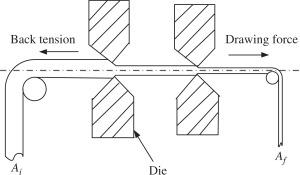Introduction
In the realm of artistic expression, the manipulation of materials plays a pivotal role in shaping the final outcome. Wire drawing, a technique as old as metalworking wire drawing itself, embodies this concept with its intricate dance between tension and form. In this exploration, we delve into the fascinating world of wire drawing, uncovering its history, methods, and the artistic potential it holds.
A Historical Perspective
The origins of wire drawing trace back to ancient civilizations, where metals were shaped into wires for various purposes, including jewelry, tools, and ornaments. Early artisans employed rudimentary methods, manually pulling metal rods through dies to reduce their diameter. As technology advanced, mechanized processes emerged, revolutionizing wire production and enabling intricate designs.
The Mechanics of Wire Drawing
At its core, wire drawing is a process of reducing the diameter of a metal rod by pulling it through a series of progressively smaller dies. The key element driving this transformation is tension. As the metal passes through each die, it undergoes significant elongation, resulting in a thinner, elongated wire. The degree of reduction and the quality of the final product depend on factors such as material composition, die design, and drawing speed.
Tools of the Trade
Wire drawing requires specialized equipment tailored to the specific requirements of the process. A drawing bench serves as the primary apparatus, providing the necessary tension and control over the wire's movement. Dies, typically made of hardened steel or carbide, come in various shapes and sizes to accommodate different wire dimensions and shapes. Lubricants are often used to reduce friction and heat generation during the drawing process, ensuring smooth and consistent results.
Artistic Applications
While wire drawing has its roots in industrial production, its artistic potential extends far beyond utilitarian purposes. Contemporary artists leverage this technique to create intricate sculptures, jewelry, and mixed-media artworks. By manipulating the tension and direction of the wire, artists can sculpt organic forms, intricate patterns, and dynamic compositions. The inherent malleability of metal allows for endless experimentation, pushing the boundaries of traditional craftsmanship.
Challenges and Innovations
Despite its versatility, wire drawing poses unique challenges, particularly in achieving precise dimensions and surface finishes. Variations in material properties and drawing conditions can affect the integrity of the wire, leading to defects such as cracks, surface irregularities, and residual stresses. To overcome these hurdles, researchers and engineers continually explore new materials, lubricants, and process parameters to optimize performance and enhance product quality.
Exploring Creative Frontiers
As artists and artisans continue to push the boundaries of traditional techniques, wire drawing remains a fertile ground for creative exploration. From delicate jewelry designs to monumental sculptures, the interplay of tension and form offers endless possibilities for artistic expression. By embracing innovation while honoring centuries-old craftsmanship, practitioners of wire drawing contribute to the rich tapestry of contemporary art, bridging the gap between tradition and modernity.
Conclusion
In the hands of skilled craftsmen wire drawing and visionary artists, wire drawing transcends its industrial origins to become a medium of artistic expression. Through the careful manipulation of tension and form, metal is transformed into intricate sculptures, elegant jewelry, and avant-garde installations.

